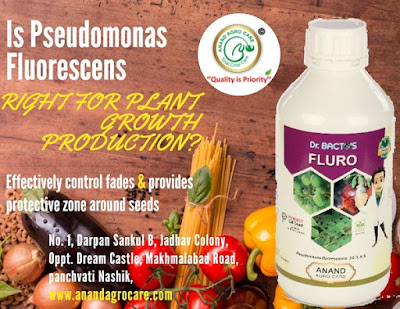Is Pseudomonas Fluorescens Right For Plant Growth Production?
Yes. Pseudomonas
Fluorescens belong to plant growth promotion. Many strains of pseudomonas
fluorescens enhances plant growth promotion and reduces harshness of a variety
of diseases. It is a Gram-negative bacterium found in soil and water that
harbours multiple flagella and secretes the fluorescent pigment.
Pseudomonas
florescence bacteria have a strong oxidizing power which helps break down
pollutants from the environment and provide useful plant growth enzymes and
oxygen. This bacterium enters the plant system and serves as a systemic
anti-disease bio-control agent. Pseudomonasflorescence bio-fungicide for control of black rot and blister blight
diseases. It also produces the antibiotic mupirocin and protects some plant
roots from parasitic fungi or nematodes.
Anand Agro Care
is a leading Pseudomonasfluorescens manufacturer in India since 2009. As a company dedicated to
research & development, production and distribution of environmentally
friendly certified organic products. Our
product Dr. Bacto’s Fluro is the
pseudomonas fluorescens bio-fungicide effectively control fades and root
diseases of Tomato, Banana, Groundnut, Soyabean, Cotton etc. This works by
metabolites and antagonism on the fungus spores of plant pathogens.
It is encompasses a group of common, non-pathogenic
saprophytes that colonize soil, water and plant surface environments. It is a
common gram negative, rod-shaped bacterium. As its name implies, it secretes a
soluble greenish fluorescent pigment, called fluorescein, particularly under
low iron availability conditions. It is a mandatory aerobic, except for some
strains that can use NO3 instead of O2 as an electron acceptor.
Pseudomonads
are responsible for the natural suppression of certain soilborne pathogenic
agents. It suppresses the growth of pathogenic microorganisms by various
mechanisms, namely, production of antibiotics, bacteriocins, siderophores, and
hydrolytic enzymes. The pseudomonas fluorescens fungicide seed treatment
provides a protective zone around seeds. It also controls Downy mildews &
Powdery mildews and other fungal diseases by incorporating antagonistic
interactions such as parasitism, antibiosis and competition.

No comments:
Post a Comment